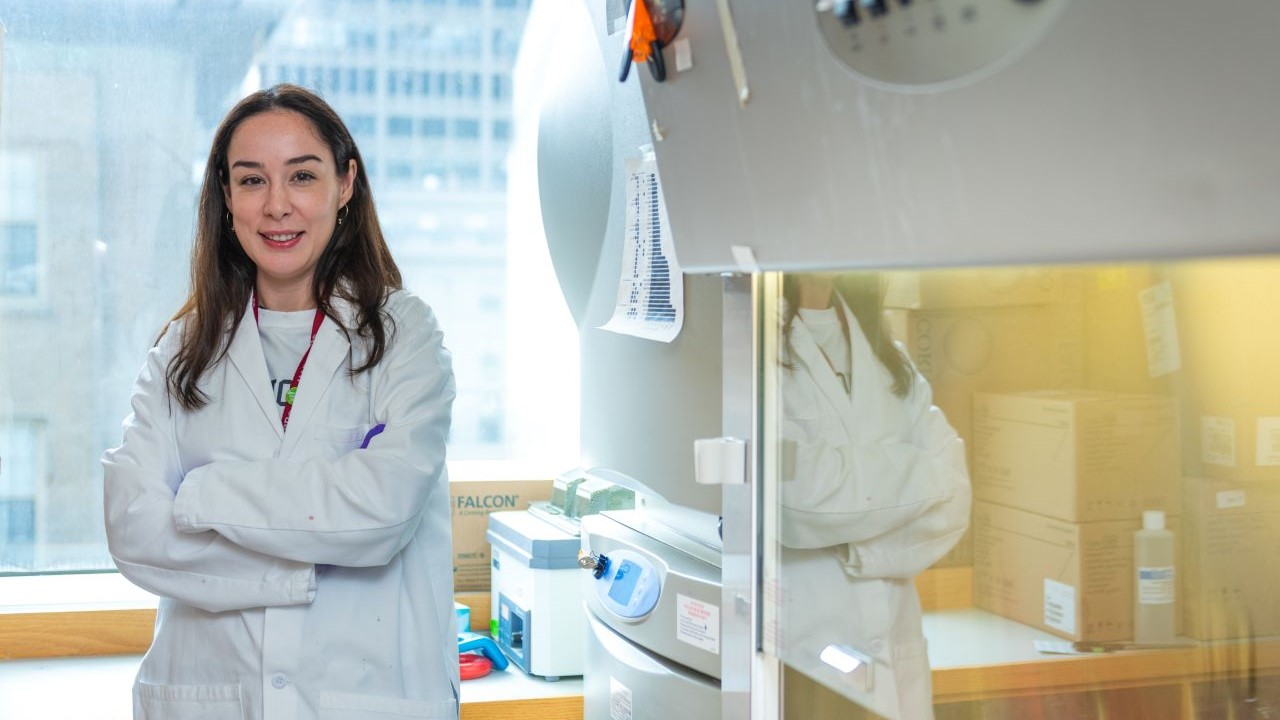Dana-Farber Cancer Institute shared a post on LinkedIn:
“In a treatment room in the Yawkey building, a patient receives a promising new therapy for ovarian cancer as part of a clinical trial. Nearby, a near-replica of their tumor undergoes the same treatment in a lab.
By simultaneously testing novel therapies in patients and in three-dimensional tumor models called patient-derived organoids, researchers are exploring how accurately the models reflect patient responses.
If the models respond to drugs the same way as patients, organoids could eventually help predict drug safety and effectiveness, test drug combinations, and assess resistance before clinical trials.
Leading the ovarian cancer patient-derived organoid program in the laboratory of Alan D’Andrea, MD is Ozge Somuncu, PhD, who joined Dana-Farber in 2023. Her career has closely followed advances in three-dimensional disease models.
Traditional cancer models are two-dimensional, consisting of cells growing in petri dishes. While useful, they lack the complexity of models that mimic the tumor’s conditions in the body.
Organoids, however, include not only diverse tumor cells from a patient but also cells from the cancer’s organ of origin, immune cells, and molecules from the extracellular matrix.
‘There was always a need to get away from two-dimensional cell lines and develop models that were more complex but more closely resemble a tumor or organ itself,’ Somuncu says. ‘That’s how I first got interested in learning that we can make an organ-like system – small organs in a petri dish that mimic disease development.’
To the naked eye, organoids are tiny, dot-like structures between 100 and 500 micrometers in size, like the width of a human hair. Under a microscope, they provide valuable insights into how tumors respond to drug agents.
Early in her career, Somuncu worked with three-dimensional skin tissue models in her native Turkey. ‘At that time – 2017 – we could do this either with traditional tissue-engineering approaches or with the then-new technique of organoids,’ she says. She focused on using patient-derived organoids for clinical research and, potentially, for clinical use.
‘Doing basic research with organoid systems is very different from using them in clinical or translational research,’ she explains.
In the D’Andrea lab, patient-derived ovarian cancer organoids are paired with clinical trials. Somuncu creates organoids from tumor samples by breaking down tissue with enzymes, separating cell types using a centrifuge, and cultivating them in a medium that fosters growth while preserving neighboring cells.
Within three days, the organoid is large enough to be treated with the trial drug. By Day 10, the drug’s effects are apparent.
‘The opportunity to take this technique, which was developed for basic research, and use it in translational research is very exciting,’ Somuncu says. ‘I know that what I’m doing is going to help patients.’ ”
More posts featuring Dana-Farber Cancer Institute.
